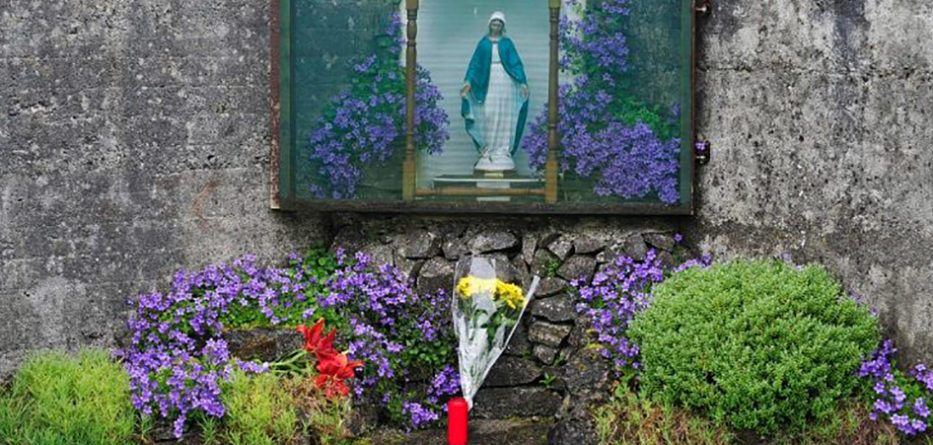The release of the report from the Inquiry into Mother and Baby homes by the Irish government, generated headlines worldwide. Catholic Outlook presents two articles reflecting on how and why women and children were treated so appallingly, the role the Church played in this situation and our response as Catholics. The first article by Eoin Sullivan describes the scope of the issue. The other, printed below, by Anne-Marie Pelletier raises questions about the Catholic Church’s moral response in these matters.
A member of the Vatican’s commission on women deacons denounces “perverted relationship to sexuality” still present in the Church
The news made a lot of noise in the international press.
A 3,000-page report in Ireland chronicled how, for decades, 18 “homes for mothers and babies” were actually places of misery and psychological destruction for tens of thousands of women. They were also places where small children were left to die.
These atrocities took place from 1922-1998 in homes run mostly by Catholic religious congregations.
A report in 2013 had denounced the another institution, the Magdalene Laundries, for oppressing unwed mothers or women who were supposedly being rescued from prostitution.
Here too, the Catholic Church was involved.
This raises questions about our commitments as a Church. We are very quick to denounce and work against the collapse of morals, as well as alarming societal and legislative changes.
But now we are faced with a very uncomfortable truth: the “culture of death”, which the Magisterium denounces, is not simply an evil committed by others.
It is also this reality which plagues the life of the Church and thrives in communities of believers trusted with the Gospel of Life.
Can one imagine anything more gruesome than the remains of the 796 dead that were recently identified at the Irish orphanage in Tuam, buried in what had once been a septic tank?
It took the tenacity of one woman, Catherine Corless, imbued with her simple humanity and with no resources other than her passion for justice, for a bit of dignity to be restored to these little children, innocent siblings of those in Bethlehem who are remembered in the Christian liturgy on the day after Christmas.
How can we understand such an aberration, which is exacerbated by the fact that these institutions were established in a traditionally Catholic country and held up as an example of Christian resistance to secularization?
Thus, it is impossible not to be suspicious of other counties in parts of Eastern Europe or America that are today’s staunch defenders of a Christianity tied to problematic ideological positions.
Pope Francis’ warning in his most recent book, Let Us Dream: The Path to a Better Future, is pertinent here.
“Rigidity is the sign of the bad spirit concealing something. What is hidden might not be revealed for a long time, until some scandal erupts,” he says.
It is also the moment to recognise that “everything is connected”, according to a principle dear to the pope.
This is particularly true in the case of sexual crimes, which are not a question of slip-ups, which would be attributable to a few misguided or perverted people.
It’s not by accident that, in each of these scandals, we see a twisted relationship to sexuality.
Prohibitions that feed fantasies, in one case. An obsession with sin that brings misfortune to unwedded pregnant women, in another case. Odd how the men are protected from bearing any responsibility.
It is this misguided conception of the relationship to “the flesh” (a misinterpreted concept from St. Paul) that can lead women — nuns — to become executioners of other women by having no other response than to condemn, humiliate and lock up in a criminal logic of atonement.
In these sad Irish establishments, one wonders, moreover, how the Gospel could have been circumvented in such a way. It’s the same Gospel that portrays Jesus before the woman who’s been dragged before him by men cloaked in religious respectability, designating her as an adulteress and demanding she be mercilessly punished.
This Gospel passage unquestionably teaches Jesus’ infinite respect for the humiliated woman. He lowered his eyes to write on the ground, before letting her leave, free of condemnation, restored to life by the trust he showed her.
This text should have cracked, if not the stone walls, at least the hardened hearts in an inhuman morality.
It is true that this account in Chapter 8 of John’s Gospel was hard to accept. It is not found in most ancient manuscripts.
This is rather intriguing, but perhaps it reveals a double significance.
First, the resistance to its message. And, then, the necessity of it will eventually triumph and impose its presence.
The issue is decidedly crucial. It is divided between hypocritical and murderous guilt on the one hand, and the good news of the Gospel on the other.
The fact remains that, for the moment, the cries of victims within the Church disqualifies the expertise claimed by Catholics. In any case, makes the Church suspect from the outset. We have destroyed our credibility.
Finally, let us note that by a disturbing coincidence, the bishops of France called for fasting and prayer over upcoming legislative votes on bioethics, at the very moment when the Irish scandal was taking a turn for the worse.
This begs the question: will our Christian societies not have to account for the ravages caused by an inflexible and anti-evangelical morality, just as much as our secularised societies will have to account for the dizzying omnipotence that seems to allow for the manipulation and unlimited disposal of life?
Anne-Marie Pelletier is a theologian and biblical scholar who is a member of the Papal Study Commission on the Women’s Diaconate.
Reproduced with permission from La Croix International.








